BEHIND THE SCENES IN THE ARIANE 6 LAUNCHER ASSEMBLY BUILDING
31.08.2022
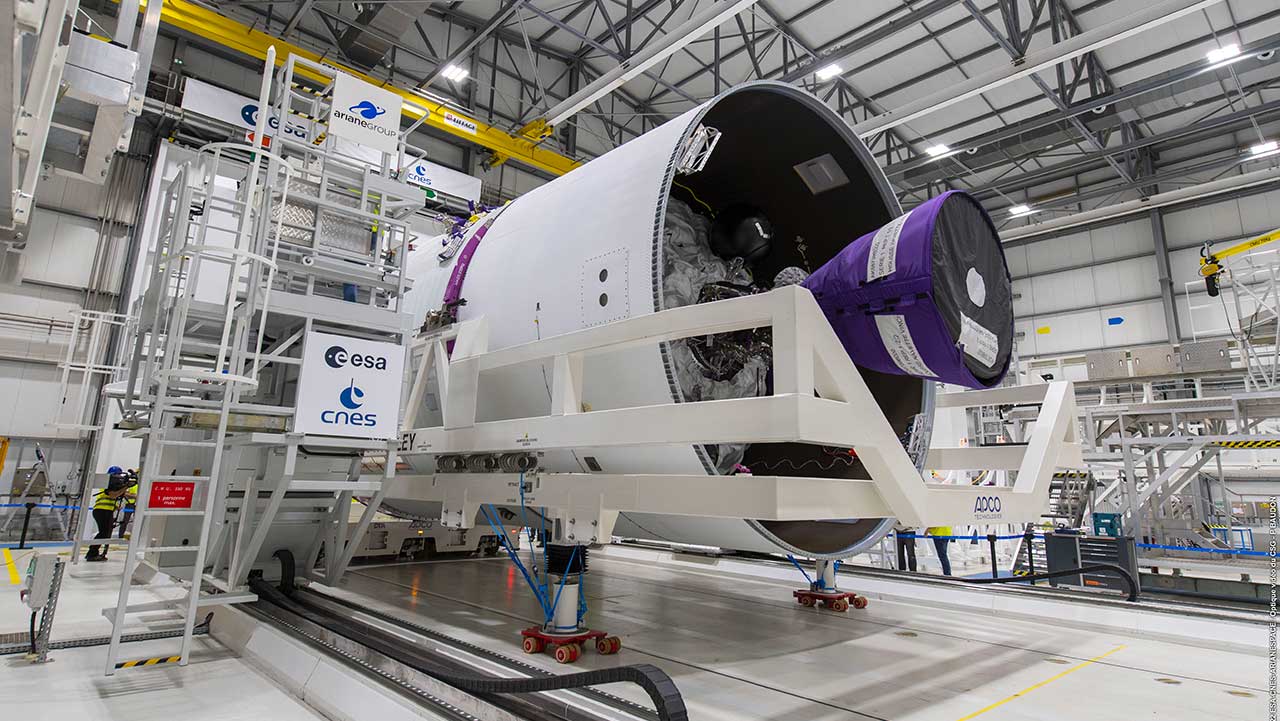
Following our interview with Laurent Mexmain, Ariane 6 Industrial Leader working on optimization of the new Ariane 6 Launcher Assembly Building (BAL) at the French Guiana Space Center (CSG) in Kourou, we invite you behind the scenes in this building unlike any other.

Arrival of the Ariane 6 upper stage and main stage at the BAL in January 2022 ©ESA-CNES-ARIANESPACE/ Service optique du CSG – P. Baudon ; P. Piron
What is the BAL?
The BAL, located in the Ariane 6 launch complex at the CSG, receives the various launcher modules so that they can be prepared and assembled to create the central core.
What is different about this new building?
These operations to assemble the central core are carried out horizontally. This does away with the need for heavy lifting gear such as cranes (or even the double cranes used for Ariane 5), but also the very high buildings which consume considerable energy for the air-conditioning needed in a climate such as that of Kourou, as well as the container tilting systems.
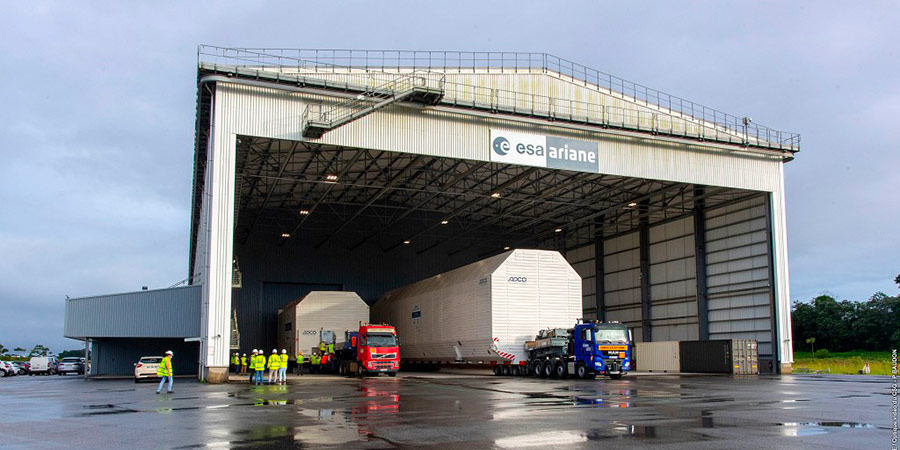
Entrance to the BAL as the Ariane 6 upper stage and main stage reach the CSG ©ESA-CNES-ARIANESPACE/ Service optique du CSG – P.Baudon
What happens now when the various launcher components arrive?
This decision to opt for horizontal assembly for example had impacts on the construction of the transport containers, which now open at the front. The stages are extracted by means of an automated guided vehicle (AGV) which takes the modules to the stage lifting system. The AGVs follow an extremely precise route along lines on the ground and can position these stages (which are 5.40m in diameter and between 10 and 35 meters long) with an accuracy of 5 millimeters!

The Ariane 6 upper stage and main stage containers arrive in the BAL in January 2022. ©ESA-CNES-ARIANESPACE/ Service optique du CSG – P.Baudon
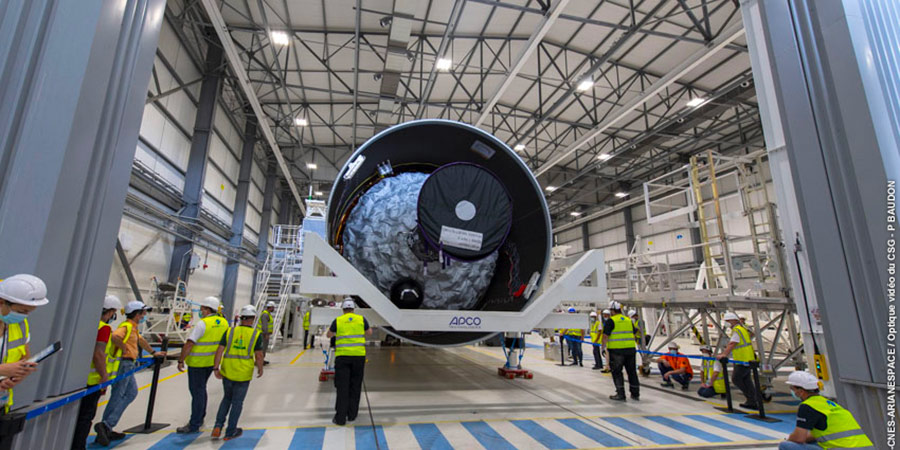
Ariane 6 upper stage after extraction from its container following arrival in the BAL ©ESA-CNES-ARIANESPACE/ Service optique du CSG – P.Baudon
What happens next?
Once extracted horizontally, the stage is positioned on what is called the HAL, or Horizontal Assembly Line. The two modules – the upper stage and the main stage – are then positioned one after the other. Once these two modules have been installed, mobile access ways are positioned all around them for final preparation. These are not heavy building structures, but a sort of mobile scaffolding. They can thus be easily moved around by hand, or with an easy-mover, a small electric appliance that assists the operator when moving each scaffolding unit. A single operator can thus move up to 3 metric tons.
Can you explain the preparation of the modules before assembly?
Post-transport inspection is carried out, a number of tags are removed – these are labels indicating an essential activity on the module – or the engines blocking system is released. This is because, at sea, the engine/structure interfaces have to be immobilized to avoid shocks, accelerations and stresses. Once they have arrived, they are allowed to rest naturally by gravity on a mechanical stop before removing the last plugs from the fluid systems.
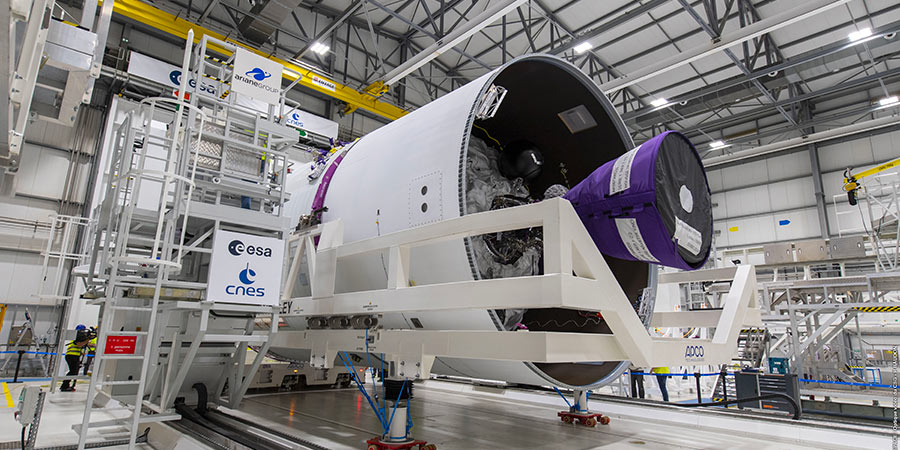
Ariane 6 upper stage after extraction from its container following arrival in the BAL ©ESA-CNES-ARIANESPACE/ Service optique du CSG – P.Baudon
For the main stage, the final row of additional heat protection tiles is placed on the nozzle because, unlike Ariane 5, the nozzle of the Vulcain 2.1 engine is very close to the jet from the ESR (Equipped Solid Rocket), commonly called boosters.
What is the assembly process?
When the two stages are ready, they are assembled. The upper stage is brought close to the main stage on the HAL. They are correctly aligned via 6 sets of 3 lasers, and then mated (placed in contact with each other). Then comes the conformity step. These stages are so heavy, gravity can alter their circumference, very slightly flattening it during the journey. A perfect circumference is restored and the two stages are then “bolted” together.
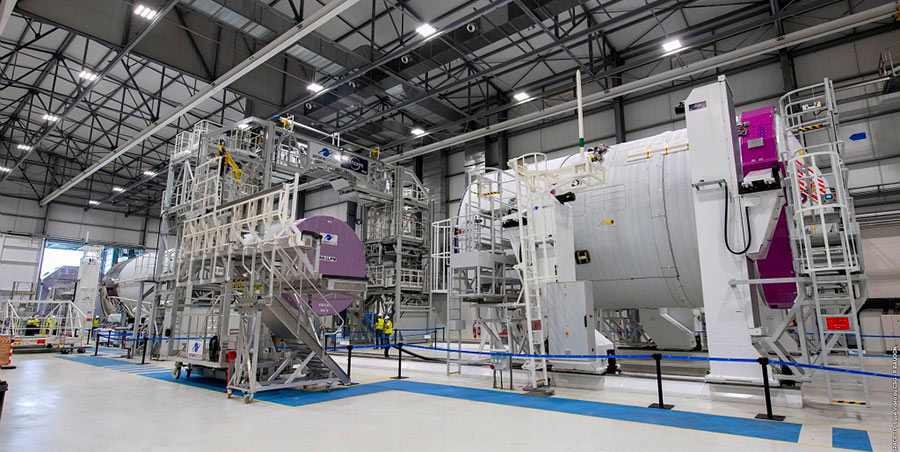

First assembly of the Ariane 6 main stage and upper stage for the combined tests in June 2022. ©ESA-CNES-ARIANESPACE/ Service optique du CSG – P.Piron
And after assembly, do the stages then come straight out of the BAL?
No. At this point we add a few protections, notably against the rain, for the 800m journey between the BAL and the Launch Zone (ZL) where it will be raised to the vertical for final launch preparations. Finally, the last activities in the BAL are preparation of the fluid connection interfaces, in other words, the system connecting the launcher to the launch pad’s cryogenic arms. Lastly, the batteries are charged. Later on, this charging will be carried out at night, as with a mobile phone, in order to save cycle time during the day.
Following the first assembly of the main stage and upper stage a few weeks ago, can we say that the building is now ready?
The building is operational and we are now certain of having the right industrial approach and instrumentation. This is the culmination of several years of work. Some tools still need to be procured and our lean approach, which consists in boosting performance in terms of productivity, quality, delivery and costs – by means of continuous improvement – means that certain processes still need to be optimized. However, we have already run several mock-up tests which have validated the readiness of the BAL.